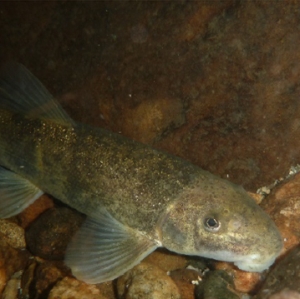SANTA ANA SUCKER
Catostomus santaanae
The Santa Ana sucker occurs in the Santa Ana and San Gabriel Rivers and Big Tujunga Creek. They are most abundant in unpolluted, clear water at temperatures typically less than 72°F.
They generally occur in stream conditions that include coarse substrates, with shallow riffles and deeper pools and consistent water flow.
The Santa Ana sucker’s diet is primary algae, diatoms and detritus scraped from coarse substrate with a subterminal mouth. They also prey on aquatic insects. Santa Ana sucker typically spawn from mid-February to early July.

| Life Stage/Activity Period | Jan | Feb | Mar | Apr | May | Jun | Jul | Aug | Sep | Oct | Nov | Dec |
|---|---|---|---|---|---|---|---|---|---|---|---|---|
| Spawning |
See a map of the modeled species habitat distribution
The primary threat to Santa Ana sucker is modification, fragmentation and loss of habitat through hydrologic modifications. Other threats include a decrease in water quality and spread of nonnative plant and animal species. Management includes the removal of nonnative fish, such as bass and tilapia, and habitat protection and restoration.
How you can help: Please do not release nonnative fish into natural areas. They prey on species such as the Santa Ana Sucker.
